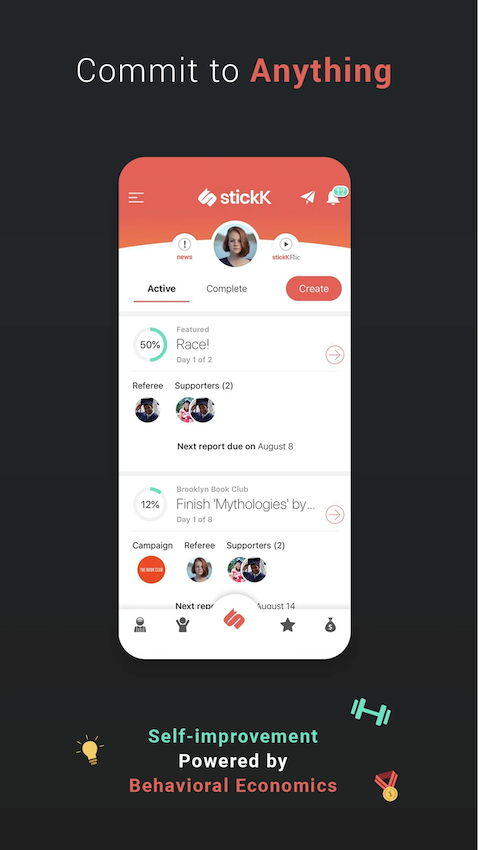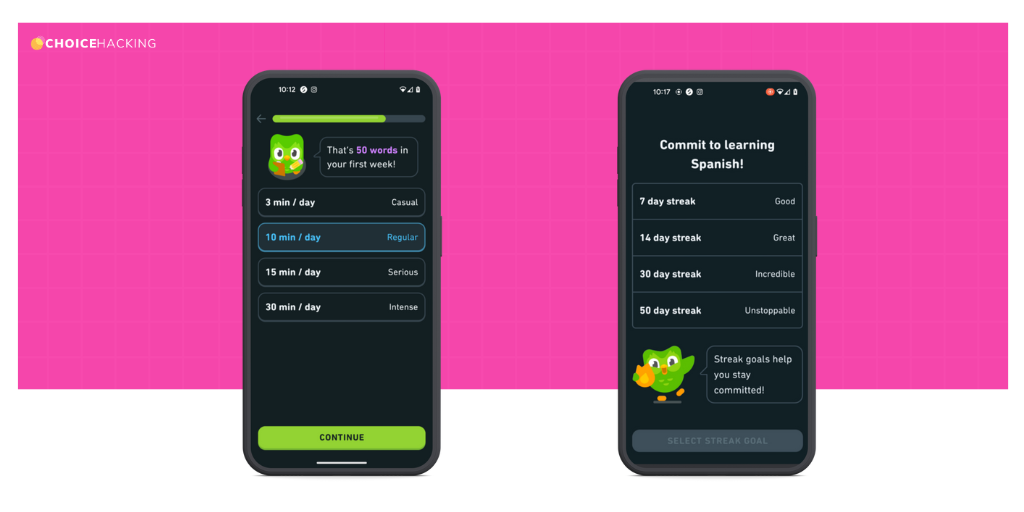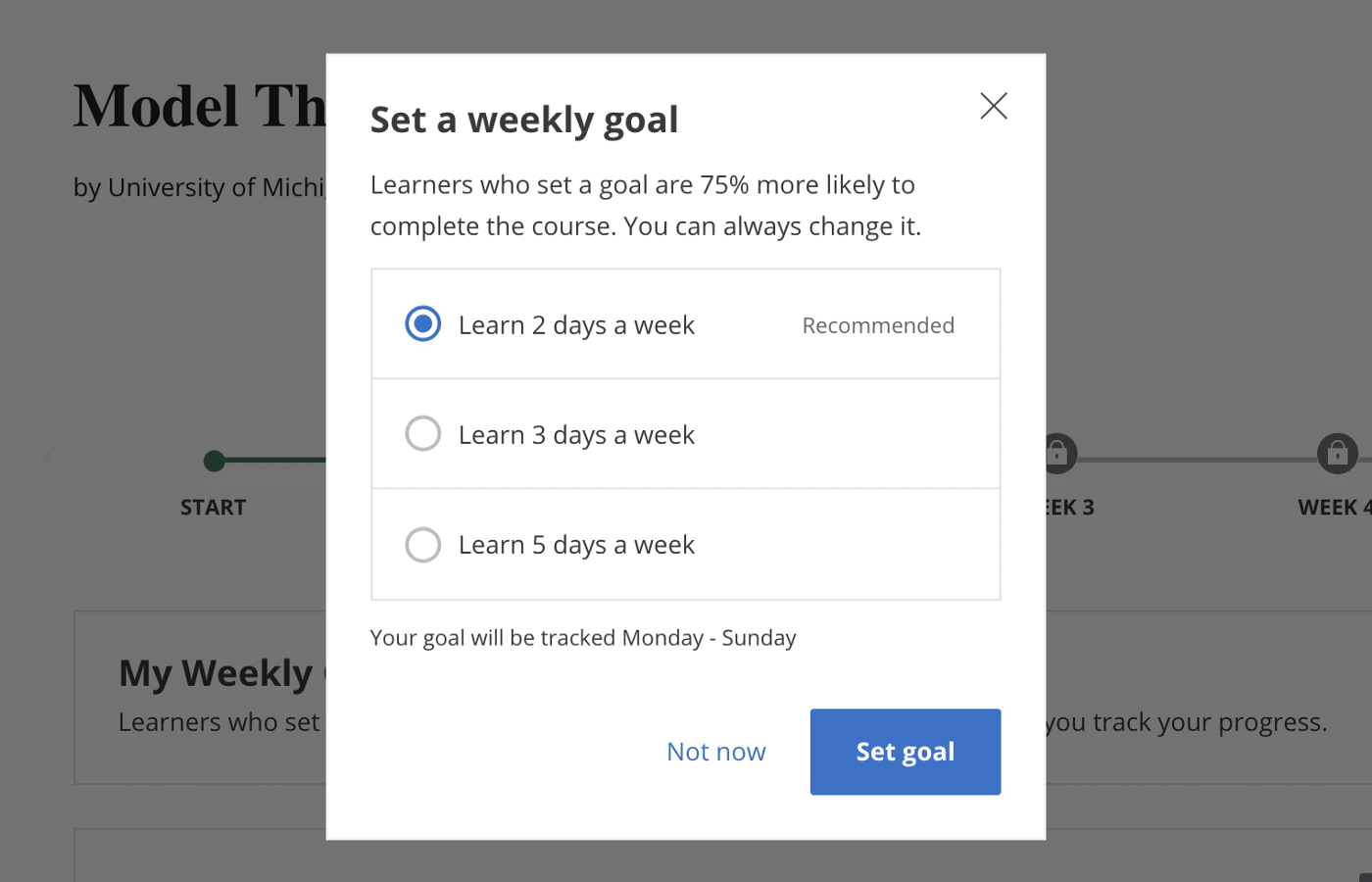Humans like our behaviors to stay consistent with the image we hold of ourselves. For example, someone who sees themselves as athletic is more likely to join an amateur sports league than those who don’t see themselves as active.
That’s why getting ourselves to make a commitment to future behavior is one of the most powerful ways to stick to a goal.
It’s down to a behavioral science principle known as Pre-commitment.
What is Pre-commitment?
Pre-commitment says that if we promise to do something in the future, we’re less likely to procrastinate and more likely to actually accomplish that goal.
The more specific and actionable a pre-commitment is, the more likely we are to follow through. Here are a few good (and bad) examples:
❌ Don’t say: “I want to exercise more.”
✅ Do say: “I commit to biking on my Peloton for 15 minutes, Mondays, Wednesdays, and Fridays.”
❌ Don’t say: “I want to improve my diet.”
✅ Do say: “I won’t eat any processed foods Monday through Friday.”
❌ Don’t say: “I want to get a better math grade.”
✅ Do say: “I will do 10 practice calculus questions in every daily study session.”
Real World Examples of Pre-Commitment
1. StickK
The StickK app was created by Yale University professor Dean Karlan to help people achieve their goals using behavioral science.
The app asks users to create a Commitment Contract — a “binding agreement you sign with yourself to ensure that you follow through with your intentions.”

Source: StickK
2. Duolingo
The Duolingo language learning app asks users to commit to a daily practice goal. It also characterizes these commitments as Casual through to Intense, further tying the action to users' self-image.

🚀 Learn what makes buyers tick
Join 8k+ of world's best marketers from brands like Disney, Coca-Cola, Google who are learning marketing psychology in <5 mins a week.
3. Coursera
The online learning platform Coursera uses pre-commitment to keep people coming back to their courses. Its user experience gives users a choice of three time-based pre-commitment options: Learning 2 days a week, 3 days a week, or 5 days a week.

Source: Coursera
Pre-Commitment: The Bottom Line
If you want to apply pre-commitment to your experience, start by asking yourself a few questions:
- Is pre-commitment right for our brand and customer experience? Not every company should ask users to pre-commit. While a reading app might ask users to set a daily goal, a gambling app probably shouldn’t ask people to commit to a daily use goal (but asking them to set a gambling limit could be a good idea).
- Which behavior are we trying to encourage our users to do? Make sure that you’re asking for something that’s specific and actionable (like using the Duolingo app 10 minutes a day) and not overwhelming or vague (like asking users to commit to running 5 miles a day, or asking them to just “open the app”).
Whether it's exercising 3 days a week or reading 10 minutes every day, Pre-commitment can help users stick to their goals.
